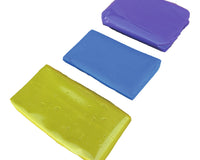Most car owners assume that polishing is a simple, universal process, but the truth is that every type of automotive paint behaves differently. Before you choose a polish or correction method, you must first understand the paint system used on your car, its hardness, its finish, and how it reacts to abrasives. This knowledge helps prevent accidental damage, uneven correction, or the dreaded over-polishing that can remove more clear coat than intended. When you understand your car’s paint type, you gain the confidence to select the right product, use the correct technique, and achieve the gloss and clarity you’re aiming for.
Modern cars no longer use a single paint formula. Instead, manufacturers use various systems depending on cost, durability requirements, and aesthetic goals. Some paint types are soft and scratch easily, while others are extremely hard and need stronger abrasives to correct. Some finishes are glossy and straightforward to polish, while others—like matte or satin—must never be polished at all. This is why a beginner or even an experienced enthusiast must start with the basics: know what paint you’re working on before applying any polish or compound.
Choosing the wrong polish or method can lead to swirl marks, holograms, micro-marring, reduced clear coat thickness, or irreversible damage. The correct polish, however, enhances clarity, restores shine, removes defects safely, and improves long-term paint health. Understanding the paint type makes the difference between a flawless finish and an expensive mistake.
Types of Automotive Paint Systems
Understanding the different paint systems used in modern and older vehicles is the foundation of selecting the right polish. Each system has unique characteristics that influence how it reacts to abrasion, heat, pressure, and cutting strength.
Single-Stage Paint
Single-stage paint was common on older vehicles and classic cars. In this system, the colour and protective layer are combined into one coating rather than separated into base coat and clear coat. This paint type is softer, more porous, and more prone to oxidation over time.
Single-stage paint absorbs polishing oils differently compared to modern clear-coated paint. When polishing, you will often see colour transfer on your polishing pad because you are working directly on the colour coat. This is normal for single-stage finishes but requires caution. Using a mild to medium-cut polish is usually enough to revive gloss and remove oxidation without thinning the paint excessively.
Because single-stage paint oxidises quickly, regular polishing helps restore clarity, but beginners must avoid aggressive compounds unless necessary. A gentle approach protects the originality of the finish and keeps older vehicles looking vibrant.
Base Coat / Clear Coat Systems
Most modern vehicles use a base coat/clear coat (BC/CC) system. The base coat provides the colour, while the clear coat sits on top to protect, add gloss, and resist UV fading. This clear coat is what you polish—not the colour itself.
Clear coats vary in hardness depending on the manufacturer. German and some luxury vehicles tend to have harder clear coats that require stronger abrasives to correct, while Japanese and Korean vehicles often feature softer clear coats that mar easily and polish quickly. Understanding this distinction is vital. Using a heavy-cut compound on a soft clear coat may remove too much material, while using a mild polish on a very hard clear coat may achieve almost nothing.
The BC/CC system is the easiest to maintain but still requires a correct product selection. Using the wrong polish can create haze, holograms, or uneven correction that becomes visible under sunlight or LED inspection lights.
Matte and Satin Paint Finishes
Matte and satin finishes are becoming more popular, especially on performance and luxury vehicles. These finishes are extremely sensitive and require specialised care. They cannot be polished in the traditional sense because polishing adds gloss—which matte finishes are designed not to have.
Using standard polish on matte or satin paint will permanently change the appearance by creating shiny spots. This is irreversible without repainting. Instead, these finishes should be cared for with matte-safe cleaners, sealants, and maintenance products that preserve the muted look.
If you own a vehicle with matte or satin paint, the rule is simple: no abrasive polishing, no machine cutting, and no gloss-enhancing products. You protect the finish rather than correct it.
Ceramic-Enhanced and Chip-Resistant Paints
Some manufacturers now use ceramic-infused clear coats that offer enhanced hardness and scratch resistance. These clear coats resist minor scratching but are much harder to correct when deeper defects appear. This means that mild polishes often have little effect, and detailers must use stronger compounds, micro-abrasives, or even machine polishing with advanced pads to achieve noticeable correction.
Chip-resistant paints, often used on front bumpers or SUVs, behave similarly. They may resist swirls and micro-scratches better but require more cutting power when correction is finally needed. Choosing the right polish for these advanced paints means understanding that they are designed to be tough—but that toughness makes them more challenging to refine.
Understanding Paint Hardness
Paint hardness determines how easily a surface scratches and how much cutting power is needed to correct it.
Soft paint shows swirls and marring very easily, even from poor washing methods or low-quality microfibres. It corrects easily with light polishes, but it also requires very gentle pressure. Hard paint, on the other hand, resists marring but requires stronger compounds, firmer pads, and sometimes multiple polishing stages.
European cars often have very hard clear coats (especially Audi, BMW, Mercedes), while Japanese cars (Honda, Mazda, Toyota) tend to have softer finishes. Knowing whether your paint is soft, medium, or hard makes product selection far easier.
Identifying Your Car’s Paint Type
Most beginners don’t know how to identify their paint type, but a few simple observations help you understand what you’re working with.
Check the Vehicle’s Build Information
Some cars list their paint code and type on the door jamb or service booklet. This may include whether it is single-stage, metallic, pearl, or clear-coated.
Assess Gloss and Colour Transfer
If hand polishing produces colour on the pad, you likely have single-stage paint. If no colour transfers, but the finish appears glossy, it’s likely clear coat.
Use Test Spots
Professional detailers always start with a test spot. Using a mild polish and pad combination, they assess:
-
How easily defects are removed
-
Whether the paint reacts quickly or slowly
-
Whether micro-marring appears
This test tells you everything you need to choose the correct polish.
Consider the Vehicle’s Age
Older cars are more likely to have single-stage paint or thinner clear coats, while newer cars use more advanced clear coat systems that require specific polishing strategies.

Types of Polishes and When to Use Them
Finishing Polish
A finishing polish contains very light abrasives. It is ideal for:
-
Removing haze
-
Eliminating very fine swirls
-
Enhancing gloss before applying wax or sealant
-
Maintaining already polished paint
Finishing polishes are perfect for soft paint that marks easily.
Medium-Cut Polishes
Medium polishes strike a balance between cutting power and finish quality. They remove moderate swirl marks, light etching, and fine scratches. Most cars respond well to a medium-cut polish, making it the most versatile option for general paint correction.
These are ideal for cars with typical daily-use wear and tear.
Heavy-Cut Compounds
Heavy compounds contain strong abrasives capable of removing deep scratches, oxidation, and severe defects. They are generally used on hard paint where mild products are ineffective.
They require caution because over-use can remove too much clear coat, especially on softer paint systems. Heavy compounds are best followed by a finishing polish to refine the surface and restore clarity.
All-in-One (AIO) Polishes
AIO products combine polishing, cleaning, and protection in one formula. These are excellent for beginners who want visible improvement without multiple stages. They work best on mildly affected paint and give a clean, glossy finish without needing advanced tools.
Polishes for Matte Paint
Matte-safe polishes contain no abrasives and do not increase gloss. They are used only to clean and maintain the finish without altering the texture. True polishing is not suitable for matte paint, so only matte-specific products should be used.
Choosing the Right Polish for Your Paint Type
Matching polish to paint type is a skill that becomes easier with experience. Here is a simple guide:
-
Soft paint: Use finishing or very mild medium-cut polishes
-
Hard paint: Use medium to heavy compounds depending on defect level
-
Single-stage paint: Use mild to medium polishes and avoid aggressive correction unless necessary
-
Matte or satin paint: Do not polish—use matte-safe cleaners only
-
Ceramic-enhanced clear coats: Use micro-abrasive compounds and firmer pads
The choice always depends on two factors: paint hardness and defect severity.
Hand Polishing vs Machine Polishing
Beginners often wonder whether polishing by hand is enough. Hand polishing works for minor defects, gloss enhancement, and light cleaning, especially on soft paint. It gives excellent control and reduces the risk of damage.
Machine polishing (using a dual-action polisher) is better for deeper corrections, heavy swirls, and restoring older paint. It provides consistent results and saves time but requires more understanding of pads, speeds, and pressure.
Safety Tips for Choosing and Using the Right Polish
-
Always start with the least aggressive polish
-
Avoid polishing edges, curves, and thin panels excessively
-
Use clean microfibres to avoid adding new scratches
-
Inspect paint under different lighting conditions
-
Never polish matte or satin finishes
-
Allow paint to cool before polishing, especially in summer
Understanding these fundamentals prevents damage and leads to better results.
Conclusion: Matching Paint Type and Polish is the Secret to a Flawless Finish
Car polishing is not just about making your paint shiny—it’s about treating the paint correctly according to its unique characteristics. When you understand whether your car has single-stage paint, clear coat, matte finish, or a ceramic-enhanced system, you gain the knowledge needed to choose the right polish safely and effectively. With the correct polish and technique, you’ll achieve a deep, reflective gloss while preserving the health and longevity of your vehicle’s finish.




